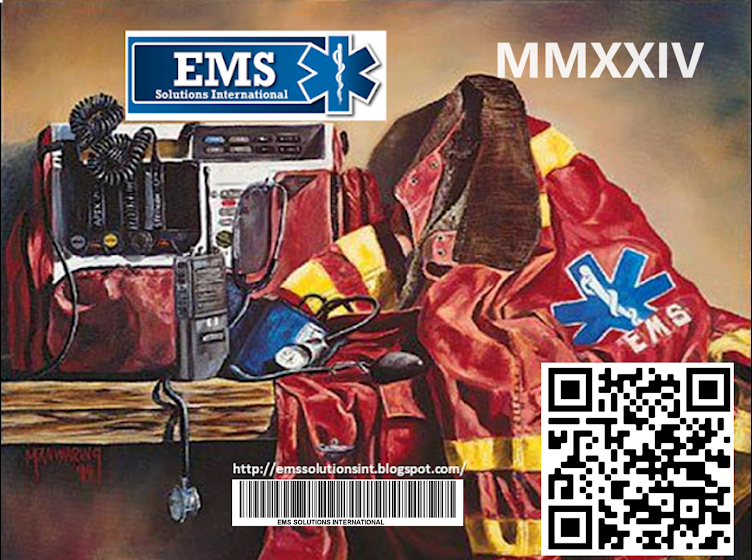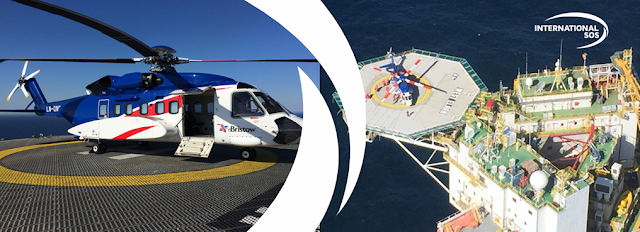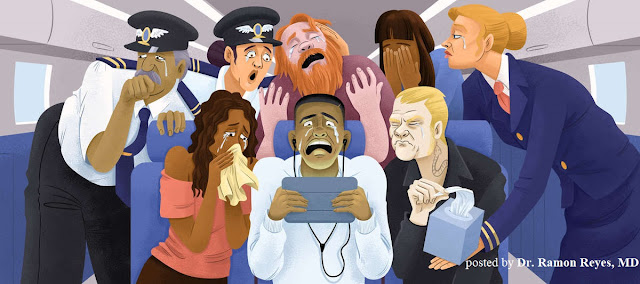Why do we cry on airplanes?
By Starre Vartan, CNN
Updated 11:34 PM EDT, Tue May 23, 2023
Video in link from CNN
Unlike just 25 years ago, it’s now hard to find someone who hasn’t been on a plane.
It’s a unique travel experience that human beings didn’t do in significant numbers until quite recently. So it’s no wonder it does some strange and unexpected things to us, including bringing us to tears.
The reporting is anecdotal, but there’s plenty of it: Virgin Atlantic even did a survey in 2011 that found “over half of respondents (55%) agreed their emotions become heightened when on a flight and 41% of men surveyed said they hid under blankets to hide their tears.”
When we fly, we are more likely to cry – but why?
Psychological factors
The first reason is simple: We bring ourselves with us. That includes the myriad mental-health issues we carry.
“At every age level, across genders, religions, races and backgrounds, many people have one of the baseline mental illnesses, from claustrophobia to agoraphobia, and other various manifestations of anxiety – they’re ubiquitous,” says Dr. Robert L. Quigley, senior vice president and regional medical director of International SOS & MedAire.
“The stresses of travel are enough to trigger anyone who has a baseline mental health challenge,” he says.
Travel psychology: Why do we visit the same places over and over again?
Few would argue that flying isn’t stressful: Getting to the airport in time, the intense scrutiny of security, then boarding the plane and ensuring you squeeze all your belongings and your body into small spaces – as quickly as possible – is a challenge.
If you’re traveling solo, you’re locked inside a small space with a group of strangers for the duration of your flight. These circumstances put many on edge.
And then there’s the reason for your travel. Did you just say goodbye to a loved one or are you flying to a job interview or a place you have never been to? All of these things are stressful for even the most even-keeled people. Add in even a mild anxiety problem (anxiety is the most common mental illness, affecting almost 20% of the population) and it doesn’t seem so curious why people might find themselves in tears once aloft.
The physical part
Planes are also particular – and often, particularly uncomfortable – environments.
The ever-smaller seats and minimized legroom doesn’t just lead to painful hips and knees.
“The smaller seating arrangement increases anxiety – your basic physical boundaries are encroached,” says Dr. Jodi De Luca, a Colorado-based licensed clinical psychologist and expert on altitude and emotions.
“It’s not comforting to fly anymore. Our basic needs – food and drink, blankets and pillows, aren’t provided for. You’re even limited to how much you can bring on-board to comfort yourself,” she adds.
And then there’s the cabin pressure, usually maintained at a level of 5,000-8,000 feet, which can have very real physical effects, depending on the person.
Innovative aviation ideas shortlisted for 2023's Crystal Cabin Awards
“There’s a plethora of evidence that you go into a relative state of hypoxia [oxygen deficiency] when you’re in flight,” said Quigley.
The affects, she says, may not be realized by passengers.
“One person might feel weepy, another sleepy – hypoxia affects people in different ways. There may even be hormones triggered by hypoxia – it’s all idiosyncratic.”
Add these inputs together and it not surprising we cry at 36,000 feet. We feel physically weird, we have little control over our circumstances, and we may feel vulnerable.
Feeling this way, we might turn to in-flight movies, but anyone who has cried over a terrible rom-com – yes, that was me sniffling along to “How to Lose a Guy in 10 Days” – knows that sometimes media can work against reducing emotional feelings.
“There’s something special about crying on board an airplane,” says Stephen Groening, Professor of Cinema and Media at the University of Washington in Seattle, who has studied how inflight entertainment might have unique effects on travelers.
In a study on the subject, Crying while Flying: The Intimacy of Inflight Entertainment, he posits that “the technological apparatus of inflight entertainment generates a culture of intimacy [by creating] a relationship of extreme proximity between passenger and media form.”
Groening thinks it might be the combination of stressors and the closeness of the media that conspire to bring us to tears.
The role of alcohol
What goes better with a film than a glass of wine? Alcohol may help reduce the anxiety of flying for some people, but it can also have a host of negative effects: It can exacerbate dehydration, which is already affecting most travelers due to the cabin pressure.
The physical and psychological effects of drinking plus cabin pressure are additive, says Quigley. So if you quaff a cocktail while flying, the two can exacerbate each other.
“Alcohol can make you more emotional – so can hypoxia,” says Quigley.
DeLuca doesn’t advise drinking while flying and points out that it’s dangerous to combine medication for anxiety with alcohol.
“You can go into respiratory failure,” she says.
Flight attendants share their air travel secrets
So what can you do if you feel emotional when you fly? One option is just to cry it out, as long as you can do so without upsetting other passengers. Everyone cries differently, it may be that you can shed tears in a private way.
But keep in mind that you are in public, says De Luca. She advises travelers to consider their own well-being as well as the others around them. So if you feel tears coming on, consider finding a private place to cry (which she admits is a challenge on most planes).
To avoid the tears, “If you are traveling with someone, talk your feelings out,” De Luca advises as a first line of defense. If you are solo, she suggests distracting yourself, “So the brain is forced to think instead of feel – do a crossword or Soduku, play a video game or play mental games using the alphabet.”
Here's the real reason to turn on airplane mode when you fly
Some find meditation podcasts – Insight Timer and Tara Brach offer dozens for free – helpful for calming and relaxing a racing or emotional mind.
Self-regulate what you are watching or listening to, and avoid media that would normally make you feel emotional, De Luca suggests.
That’s easier than ever – and may even change how often crying while flying happens.
“The thing that has changed about inflight entertainment is that people are bringing their own devices on board more often now. So we may see a decline in crying on board because people are choosing what to bring on a plane,” rather than selecting from pre-chosen options, says Groening.
Some are skeptical that people cry more at altitude.
Dr. Paul Wicks published a study that showed people cried at the same rate they did at home, and called the whole concept we cry more while flying a “pseudo-phenomena.”
Memory might be a play here too. We might also be that we remember the times we’ve cried on a plane better than other occasions we’ve shed tears.
“Crying by yourself isn’t memorable to you the way crying on a plane is,” said Groening.
Either way, it couldn’t hurt to pack extra tissues.
This story was originally published in 2019 and has been updated.
Dr Robert L. Quigley, Senior Vice President and Regional Medical Director of International SOS & MedAire, joined CNN to explain the reasons and triggers of why many cry while traveling.
Read more: https://okt.to/P5JgvY
#TravelTrends2023
Here's Why In-Flight Movies Make You Cry Like a Baby
TRAVEL
Here's Why In-Flight Movies Make You Cry Like a Baby
By Matt Meltzer
Published on 11/30/2017 at 10:00 PM
Turns out a lot of people cry more at in-flight movies
Fortunately for my sense of self-worth, I have company as a dude who goes to pieces over a Clint Eastwood movie. Virgin America conducted a highly scientific study on its Facebook page a few years back that found 41% of men admit to crying at movies on airplanes. And 55% of people admit feeling heightened (sorry) emotions while flying. In response, Virgin began including “emotional health warnings” before some particularly loaded films on their flights. Among those: Gran Torino.
Anecdotally, I found way more people than expected experienced the same thing.
“Once during Mamma Mia!, I began sobbing uncontrollably loud, and was convinced the turkey sandwich I was eating had listeria,” says Tara, an expectant mother at the time. “I began sobbing because I thought I’d never get to sing songs to my daughter the way Meryl Streep was doing. I also once started crying during a Cheerios commercial on a flight, so I guess it doesn’t take much to set me off.”
Maybe you can chalk that one up to hormones. But this would not be the case for Kevin, a stocky 250-pound real estate broker who admitted to tearing up during a showing of Free Willy.
“I don’t know bro,” he tells me. “Free Willy is pretty emotional.”
A travel writer named Haley confides: “Two weeks ago I started bawling during Fast and the Furious 8. The guy next to me looked over and said, ‘You’ve gotta be kidding me’ and made fun of me for at least 10 minutes.”
Haley told of another time an older lady said she was too old to be crying at How to Train Your Dragon. Haley is 25.
“I ended up becoming friends with a couple because I was just straight-up ugly crying on a flight home from Australia,” Sonia, a hotel concierge, tells me. “They asked if I was OK and I told them, 'Yes, I’m just watching Moana.'"
A psychiatrist friend offers some insight, but not after his wife called him out for plane-crying at Inside Out and Monsters Inc.
“Being on an airplane means you’re traveling, and that often has some kind of sentimental value,” he says. “So if you think about it you are really primed to be more emotional. Traveling can increase oxytocin levels, especially when traveling with loved ones. It’s the same reason couples have more sex on vacation.”
Why you cry like a baby
Jason Hoffman/Thrillist
The stress of flying fries your nerves
Nobody flying economy class in 2017 will describe air travel as “fun.” Even with TSA Precheck and Group 1 boarding, the stress of flying can grind down anyone’s emotional stability.
“By the time you sit down you’ve probably been stressed all day,” says Dr. Randi Mackintosh, a Tallahassee, Florida psychiatrist. “A lot has been building up. When you get up in the air, it might be the first time you’re realizing how the stress is impacting you.”
Between rushing through traffic, endless check-in lines, and the shuffle through TSA with a 45-pound duffel bag on your shoulder, just getting to a plane can put you at wits’ end. Sitting down and throwing on a mild animated feature might seem like a good way to decompress. But when Carl Fredricksen’s house starts lifting into the air, all that pent-up stress comes flying out through your tear ducts. And then you have to make up a lie to explain why daddy is welling up at Up!.
When Elijah Wolfson considered this question in an Atlantic essay, he noted the catharsis that simply settling into an airplane seat might represent. “You’ve finally reached the end of what was likely a full day of getting to the airport, and could have been weeks of preparing, or even years of an important life phase culminating in an end and new beginning,” he wrote. In a state like that, it’s no wonder a mushy-ass Cheerios commercial could tip an otherwise with-it person into a teary puddle.
The sky is a lonely place
Flying is kind of like the loneliness people describe while driving the 405 in LA: surrounded by people, but completely alone. Your seat becomes your own little universe, and because you have no distractions, you’re more apt to feel emotions you might not otherwise. With nothing to distract you, you’re completely engulfed in the movie and all the emotions it’s trying to elicit.
“Our feelings get neglected when we have distractions like work, catching up with friends, or email,” says Mackintosh. “Our distractions are minimized when flying and we’re forced to focus on the issues we’ve been dealing with or putting aside.”
Andy, an editor with an online publication, says emotions he doesn’t think about on the ground bloom when he’s watching movies in the air.
“If I’m going to see my family for the first time in a while, I‘ll be extra emotional already and shit sets me off,” he says. “Or if I miss my kid -- kid stuff gets me worked up.”
That solitude plays right into the hands of filmmakers. T.J. Martin, whose credits include one of the best documentaries of 2017 in LA 92 and the 2011 Oscar-winning documentary Undefeated, about a high school football team from the poor side of Memphis, says people tell him all the time they bawled their eyes out when they watched that film mid-flight.
“People on planes are listening on headphones,” he says. “For a filmmaker, that’s almost preferable to a theater because it creates such an immersive experience. I want to create a way to replicate the way I felt when I experienced something. The intention isn’t to make someone cry, necessarily. But in some cases, the isolation of being on a plane helps create that experience.”
For the record, right after Gran Torino I watched Undefeated. It did not end well for my last shreds of dignity.
Why you cry on a plane
Jason Hoffman/Thrillist
At 30,000 feet, there's nowhere to hide
Though that smug little curtain at the front of the cabin might suggest otherwise, when we fly, we are all equal. We’re just a couple of hundred people in a big flying tube completely at the mercy of pilots and physical laws. Which means no matter how tough or how rich you are, you have to take a temperature of your own mortality.
“Whoever we are on the ground is all stripped away,” Mackintosh says. “We’re in a vulnerable position up there, and even people who are comfortable flying have some concern. And when we’re vulnerable, all our emotions get heightened.”
Sheer altitude might also play a role. A 1988 study found that the decreased oxygen and mild hypoxia one experiences at altitudes has a severe effect on moods. The same triggers that lead to full-blown fights over seat-reclining. This can not only lead to slap fights over seat-reclining and heartfelt applause when a pilot makes a routine landing in a rainstorm. It can also lead to guiltless sobbing at The Big Sick.
The high of travel is over, and your brain is crashing
Travel is often done for emotional reasons. There are obvious ones, like seeing a long-distance romantic partner or family living thousands of miles away. But it can be as simple as a bachelor party or traveling to your alma mater for a football game. Or just the simple thrill of seeing somewhere new and experiencing different things.
The rush your brain gets from anticipating a trip, then living it, can throw your neurotransmitters out of whack, and getting on a plane home can be a massive letdown. It might not cause you to cry as soon as you board -- but then you see the toys hold hands as they slide hopelessly toward a fiery end in the final scenes of Toy Story 3. Forgive your exhausted brain for hitting the cry button.
Alcohol might play a part
Another thing about vacations: Sometimes we indulge in vices we don’t when we’re at home. That’s not to say that your weekend trip to Buffalo was a like a weekend at Andy Dick’s. It’s just saying that, maybe, possibly, you drank a little more on vacation than you do at home. Or may have indulged in other substances. Or connected with a stranger you’ll never see again. The hangovers, comedowns, and emotional voids that come with that can seriously mess with your brain, and make Seabiscuit winning a few bucks for degenerate gamblers seem like the most miraculous moment in cinema.
“Alcohol is a depressant, and the body reacts as if we’re depressed when we drink,” says Mackintosh. “So consuming a lot of it means you’re more likely to express a sad emotion, like crying.”
Even a couple of glasses of wine are enough to set you off, since alcohol can feel like it hits harder at altitude. We’re not going to preach to you about how much you should drink while flying, but if you don’t want to cry, maybe lay off the pinot grigio.
Not everyone gets all weepy at in-flight movies, and despite all the anecdotal evidence nobody has ever seriously studied the phenomenon. But if you think you’re weird the next time you’re flying from Atlanta to Phoenix and you start crying at the reprise of “Rainbow Connection” at the end of The Muppet Movie, know you’re not alone. Though that probably wouldn’t stop Walt Kowalski from calling you a sissy.
Sign up here for our daily Thrillist email and subscribe here for our YouTube channel to get your fix of the best in food/drink/fun.
Matt Meltzer is a contributing writer to Thrillist who has absolutely never cried at The Muppets. Except that once. Follow him on Instagram @meltrez1.









